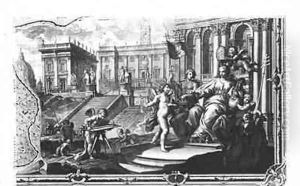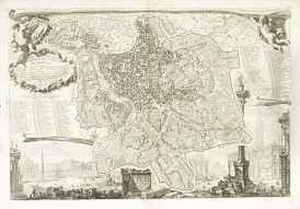Nolli, Giovanni Battista Paintings
Giovanni Battista Nolli, known more commonly as Giambattista Nolli, was an Italian architect and surveyor best known for his accurate and detailed plan of Rome, the 'Pianta Grande di Roma', or the Nolli Map, published in 1748. Nolli was born in 1701 in Como, a city in the Lombardy region of northern Italy, which at the time was part of the Duchy of Milan. Little is known about his early life and training, but his work would come to have a significant impact on the field of cartography and urban planning.
Nolli moved to Rome, where he began his career as an engraver and surveyor. His most famous work, the Nolli Map, took over a decade to produce and involved meticulous measurements that provided an unprecedented level of detail. The map is not only important for its accuracy but also for its innovative representation of public and private spaces. Nolli used a unique method of shading to differentiate between open, public spaces, which were left white, and the built, private environments, which were shaded. This approach has influenced the way urban spaces have been represented in maps ever since.
Apart from his cartographic achievements, Nolli also participated in archaeological and architectural projects. He was involved in the excavation of the Theatre of Marcellus and even proposed a reconstruction of the ancient structure. Furthermore, he contributed to the architectural survey of St. Peter's Basilica, which was part of an effort to create an informational and promotional publication about the Vatican.
Nolli's work was widely respected, and his map was used extensively for the planning and development of Rome in the years following its publication. He also inspired future generations of cartographers and urban planners with his rigorous scientific approach to mapping cities. Nolli's Pianta Grande di Roma remains an invaluable historical resource and an enduring testament to his skill as a cartographer.
Giovanni Battista Nolli died in 1756, leaving behind a legacy characterized by the Nolli Map, which continues to be studied and admired for its accuracy, beauty, and utility. His work bridges the gap between art and science, and his map is considered not only a tool for urban planners but also a work of art that provides insight into the social and architectural history of Rome during the 18th century.

